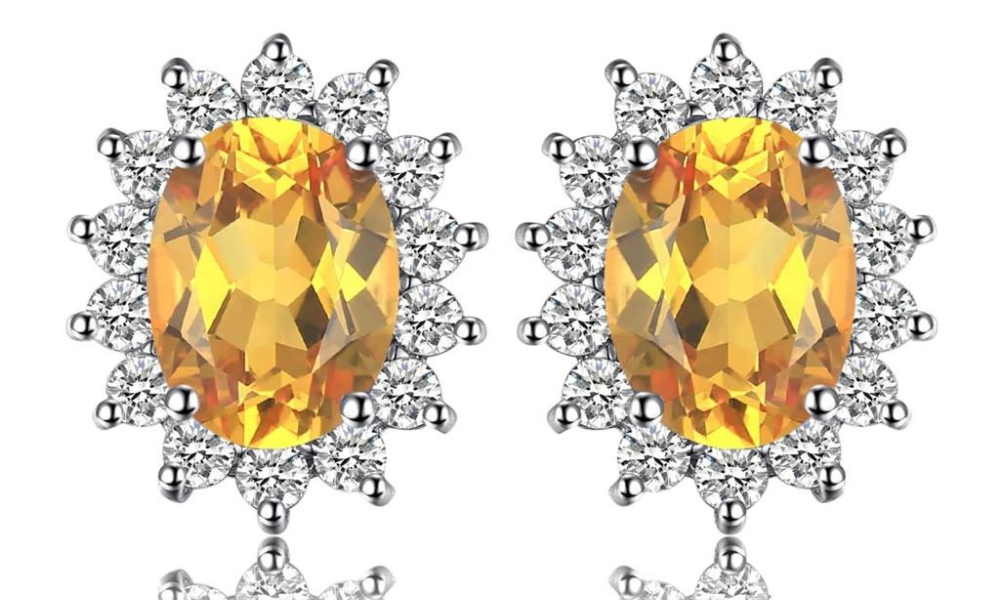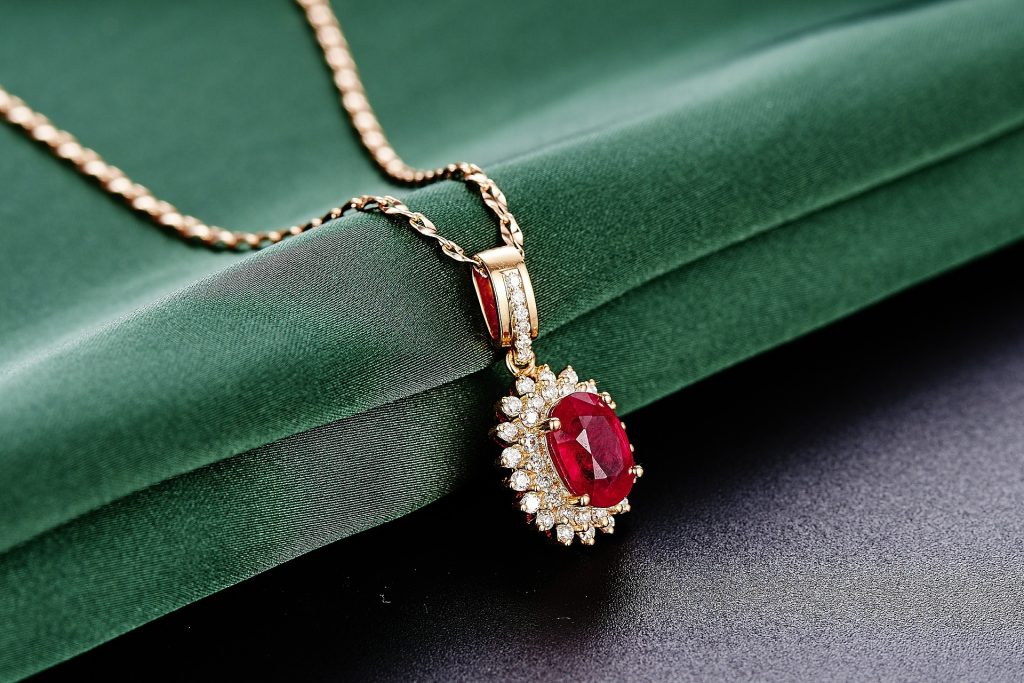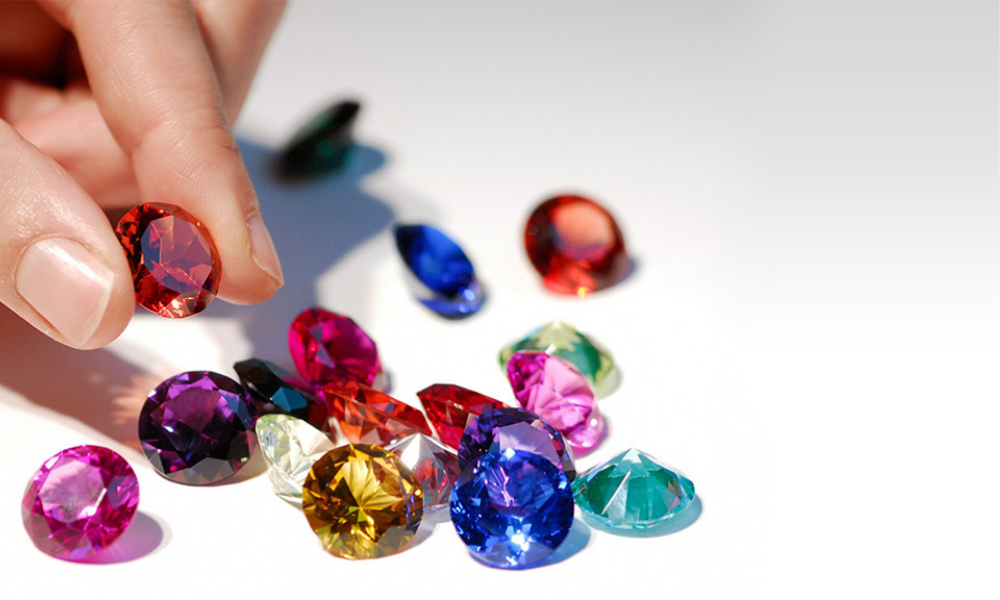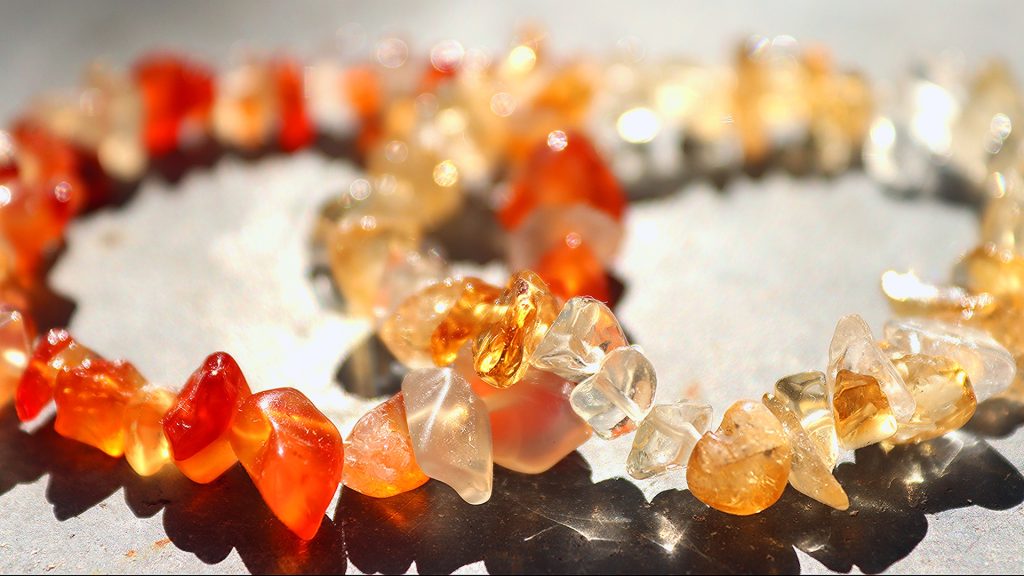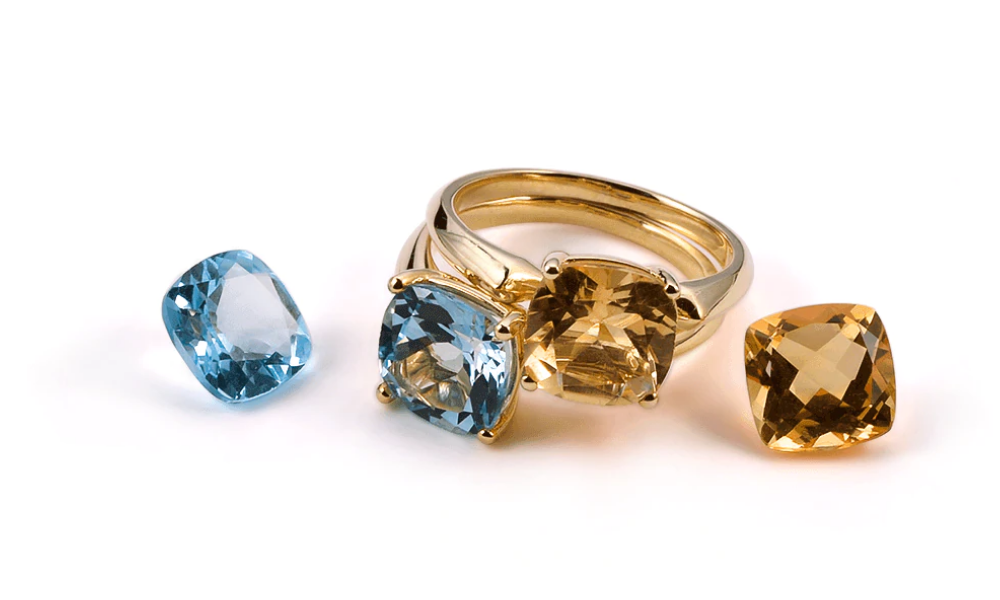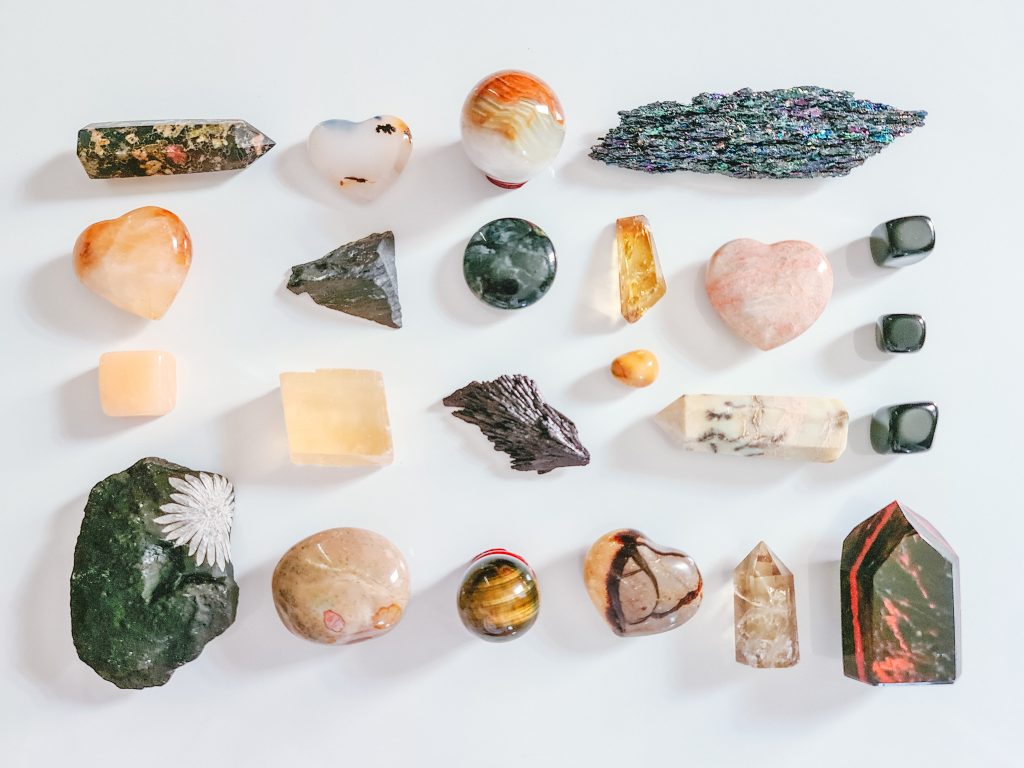You may be asking: what color is a citrine gemstone? This gemstone comprises the second most abundant mineral on earth – quartz. As such, it is quite scratch resistant. Citrine can be found in large sizes, from small pendants to statement rings. Despite its hardness, citrine is relatively inexpensive, and the price per carat does not increase dramatically as the size increases. Citrine has been popular for many years during the Art Deco period when actresses such as Greta Garbo and Joan Crawford wore elaborate jewelry, particularly necklaces and rings.
The name “citrine” comes from the French word “citron,” meaning “lemon,” but the color is anything but lemon yellow. While citrine is the most widely-available stone in the jewelry market, it is not necessarily lemon-yellow. Most citrine on the market is heat-treated amethyst or smoky quartz. While quartz is naturally orange-yellow, the yellow-orange hue of citrine is due to traces of iron that were present during the gemstone formation.
The Colors of Citrine
Citrine can be yellow, orangey-yellow, yellowish-orange, or brownish-orange in color. Any transparent quartz in that color spectrum, regardless of saturation, is called citrine. Citrine refers to both stones with a subtle tint and vibrant colors.
The color quality of a stone has a significant impact on its pricing. Stones with light colors are plentiful and cheap. Stones with a deep, consistent hue are rare, precious, and much sought after by consumers.
Reddish orange and reddish-brown are unusual quartz colors. Madeira citrine is the name given to gems with these reddish tones.
The name is derived from wines of a similar color produced in the Madeira Islands, a Portuguese autonomous entity located about 450 miles southwest of Portugal in the North Atlantic Ocean.
Amazon Collection 925 Sterling Silver 8 x 10mm Oval Cut Gemstone Dangle Earrings for Women with Leverbacks
Features
- 925 STERLING SILVER – These oval-cut gemstone dangle earrings are 8x10mm and are stamped “925” on the back. This stamp guarantees excellent quality and auhentiTONES – Citrine is November’s birthstone. The unique beauty of each item is defined by the inherent qualities and composition of mined gemstones. The photograph’s color and texture may differ slightly from the genuine stone.
- QUALITY AND STYLE – Classic, ageless, and versatile jewelry that can be worn in any setting.
- READY TO GIFT – Our jewelry is ideal for any occasion, whether for yourself or a loved one.
- SATISFACTION GUARANTEE – Your purchase is backed by a 30-day, no-questions-asked money-back guarantee.
- Amazon’s Brand
November’s Birthstone
The birthstones for November are citrine and topaz. The National Association of Jewelers chose topaz as one of the first contemporary birthstones in 1912. In 1952, citrine was added to the list of modern birthstones.
Citrine and topaz are available in the yellow to the orange color spectrum, but citrine is often less expensive. Citrine is a Mohs hardness of 7 stone; white topaz is a Mohs hardness of 8 stone. Some people may feel that topaz is more durable than citrine because of this information. On the other hand, Topaz is a fragile material that is easily broken by cleavage, and it offers little, if any, advantage over citrine in terms of durability.
Geodes of Citrine
A big citrine geode from Brazil is one of the most remarkable citrine specimens you might come across. These are frequently available for purchase at large gem and mineral shows. These geodes are found in Brazilian basalt fields by gem hunters, who then clean and prepare them to stand as a crystal tower in your living room. They can be two, four, six, or even eight feet tall – or much taller.
Surprisingly, they are not filled with orange to orangy brown citrine when they are discovered. Instead, the majority of them are brimming with purple amethyst crystals. A decision is made between discovery and customer to heat the geodes in industrial ovens to turn the original purple amethyst into an orangy brown citrine.
Why would you want to turn a lovely amethyst geode into a citrine geode? Because many people who would not purchase an amethyst geode will instead purchase a citrine geode because they like the orange color or citrine is their birthstone.
Five Categories of Citrine Available In the Market
In the gem and jewelry industry, citrine is divided into five groups. These are the following:
- citrine in its natural state
- citrine with a natural color that has been enhanced
- citrine is a mineral that is formed when light amethyst is heated.
- citrine synthesized (an artificial product)
- citrine imitated (an artificial product that is not SiO2)
All of these are legal products; however, vendors should always tell customers if they are selling treated stones, gems that may have been treated, or synthetic or imitation materials.
Citrine Quartz with a natural citrine tint is extremely rare, and some individuals are ready to pay a premium for this citrine in its natural color.
Citrine that has been heated
Someone long ago discovered that heating some light-colored citrine could increase its hue. It was also discovered that an appealing citrine color might be produced by heating some light-colored amethyst, and this treatment is both effective and cost-effective. Most citrine used in gems and jewelry is heat-treated amethyst from eastern Brazil.
Most individuals are content with natural-colored citrine that has been color-enhanced by heat treatment or citrine made by heating light-colored amethyst. Many folks don’t even “consider” or “understand” these two options. For some people, though, these are two quite different items. As a result, when the nature of the color is understood, a seller should inform buyers, and when they can’t answer with certainty, they should honestly say, “we don’t know the origin of the color.”
Citrine Synthetic
Synthetic citrine is an artificial material chemically identical to natural citrine in terms of mineral structure and optical qualities. The hydrothermal process is used to create a lot of synthetic citrine in Russia, which has a beautiful hue and outstanding clarity.
Synthetic citrine is affordable, comes in various colors, and can be produced in large quantities. It’s the ideal material for creating a recognizable jewelry brand for a retailer with hundreds of locations. It may be cultivated to yield gems of nearly any size and color.
It has “excellent clarity,” which indicates it has few inclusions. One of the most reliable ways to distinguish natural citrine from manufactured citrine is to look for inclusions. This makes it difficult, if not impossible, for a gemologist using typical methods to tell the difference between real and synthetic citrine. On the other hand, many gem laboratories have scientific technology that can consistently distinguish natural citrine from synthetic citrine.
Citrine Imitation
Even though citrine and topaz are not very expensive jewels, artificial look-alikes are sometimes utilized as even more affordable alternatives to synthetics. Lab-created corundum in a yellow to orange tint in some affordable birthstone jewelry is used as a citrine substitute.
Synthetic corundum is extremely durable and has a Mohs hardness of 9. Only diamond, which is significantly less likely to be scratched or shattered than topaz or citrine, is harder than corundum (the mineral of ruby and sapphire). If a person is ready to accept a substance that only “looks like citrine,” synthetic corundum is a viable low-cost substitute for citrine.
What are the Sources of Citrine?
Small amounts of naturally colored citrine can be found in various places worldwide. The locality maps at mindat.org indicate the frequency of its occurrence.
The pegmatites of eastern Brazil are the most important commercial source of citrine with a natural yellow to orange tint. Argentina, Bolivia, Madagascar, Mexico, Russia, Spain, and Uruguay are among the countries that produce citrine.
Eastern Brazil is also the major source of amethyst that has been heating treated to generate a citrine tint. The largest important source of synthetic citrine is Russia.
Ametrine
Ametrine is bicolor quartz having zones of golden yellow citrine and deep purple amethyst in a single crystal. The name “ametrine” comes from a combination of the words “amethyst” and “ciTRINE.”
Ametrine is a rare gem, with the Anahi Mine in southeastern Bolivia producing most of the world’s commercial ametrine. Ametrine, amethyst, citrine, rock crystal, and bicolor stones are also produced at the mine.
Much of the ametrine is cut into stones with a 50/50 ametrine/citrine split; however, there are a variety of techniques to cut ametrine to get the most distinctive gems out of the mine’s production. Minerales y Metales del Oriente S.R.L. has been operating the mine since 1989. To make the most of its ametrine resource, the company engages in mining, cutting, and jewelry creation.
Explain Citrine as a Stone of Healing?
People have collected gem materials for thousands of years and marveled at their beauty. Many people have believed that gem materials had the capacity to cure, protect, or comfort a person who owns or wears them throughout history and in all areas of the world.
Even though there is no scientific evidence that gemstones have any medicinal or spiritual power, many people continue to believe in them. Citrine is one of the most well-known “healing stones” nowadays. Citrine crystals, tumbled stones, beads, and other citrine objects are sold for millions of dollars each year for use in these rituals.
Citrine: How to Take Care of it?
Citrine has a Mohs hardness of 7 and is a fairly durable gemstone. Because the dust in the air contains quartz, its facets will gradually wear away over time. Although the color of citrine is consistent, it should not be exposed to extreme heat. When wearing a citrine ring, be careful not to knock the gem because it can chip.
Wear your citrine jewelry when applying lotions or creams or using cleaning goods like a cleaner to keep it clean. Store all your gemstone jewelry individually, especially when traveling, to avoid scratching the stones and metal. Use a delicate brush behind the stone where dust can collect to clean with mild dish soap and water.
Conclusion
With its golden light, Citrine has long been seen as a gift from the sun. Citrine is a translucent quartz type named after citron, which means lemon. Its hues span from a bright lemon yellow to a bar of deep honey gold. It lights up your jewelry with a new squeeze of warm sunny tones in all of its magnificent golden and yellow colors.
Citrine is cheaper than its quartz cousin, amethyst. Like all quartz gems, citrine s quite abundant and comes in various sizes and forms, including enormous quantities. The Smithsonian possesses the world’s largest faceted gemstone by volume, a 19,548-carat smokey citrine faceted by Mike Gray. That’s 8.7 kilograms! In 2018, a Suzanne Belperron cuff bracelet set with a 160-carat citrine sold for $120,000 at the Fortuna auction house.


